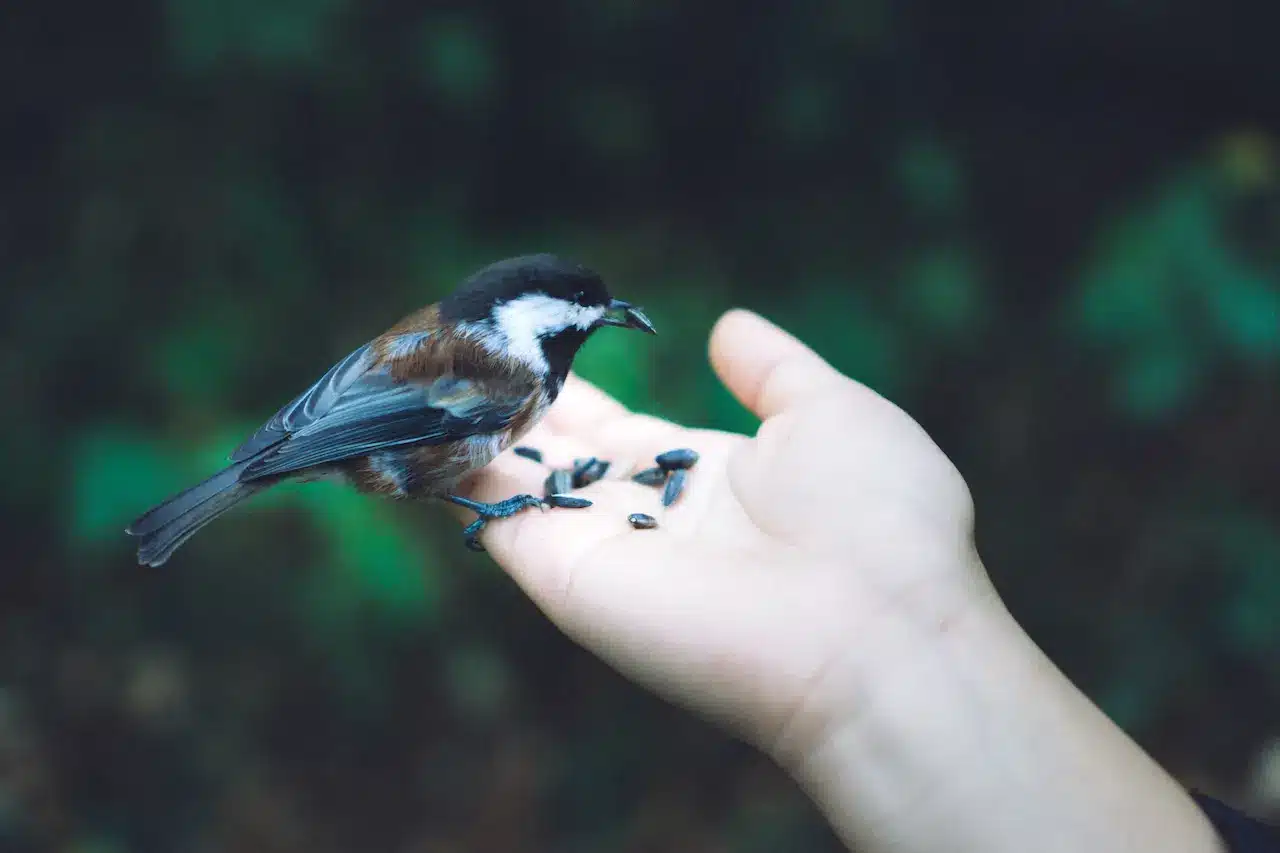Cuckoos
The cuckoos were named for the familiar calls of the Common Cuckoo, which are often used in cuckoo clocks. Most species live in forests, although some prefer more open habitats.
The cuckoos were named for the familiar calls of the Common Cuckoo, which are often used in cuckoo clocks.
The majority of species occur in the tropics. Those found in temperate species are migratory, moving south for the winter.
Most species live in forests, although some prefer more open habitats.
Description
It has generally slender bodies and are of variable size. They have long tails and strong legs.
Breeding / Nesting
Cuckoos are known for being brood parasites – although not all species are.
Some cuckoos species do lay their eggs in the nests of other species, often choosing nests with eggs that closely resemble their own.
Often, the cuckoo egg hatches earlier than the host’s chicks, and the larger cuckoo chick will usually either evict the eggs or young of their host parents.
The majority of species, however, raise their own young. For example, most of the American cuckoos, roadrunners, anis and coucals all build their own nests.
Interestingly, non-parasitic cuckos, lay white eggs; while those that are parasitic, lay colors that mach those of their hosts.
They usually nest in trees or bushes; although the coucals lay their eggs in nests on the ground or in low shrubs.

Most cuckoos feed on larger insects, caterpillars and other animal prey.
The lizard-cuckoos found in the Caribbean have specialized in taking lizards.
The larger species may also take snakes, small rodents, and even other birds, which they kill with their strong bills.
Some species – namely several koels, couas and the Channel-billed Cuckoo – feed mainly on fruit, but not exclusively so.
Those raised by fruigivore hosts, such as the Figbird and Pied Currawong., will often consume mainly fruit.
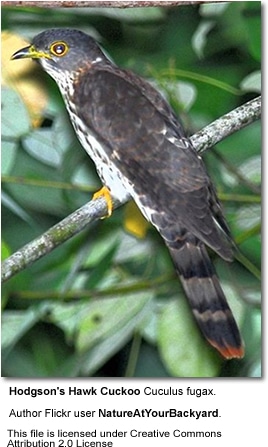
They calls are typically relatively simple – resembling whistles, flutes or hiccups
The familiar call of the Common Cuckoo is often used in cuckoo clocks.
Species list
-
-
Subfamily Cuculinae – Brood-parasitic cuckoos
-
- Genus Eocuculus – fossil (Late Eocene of Teller County, USA)
-
- Genus Clamator (4 species)
-
- Genus Pachycoccyx – Thick-billed Cuckoo
-
- Genus Cuculus – typical cuckoos (some 15 species)
-
- Genus Cercococcyx – Long-tailed Cuckoos (3 species)
-
- Genus Cacomantis (8 species)
-
- Genus Chrysococcyx – bronze cuckoos (12 species)
-
- Genus Rhamphomantis – Long-billed Cuckoo: The Long-billed Cuckoo is monotypic (a genus consisting of only one species) within the genus Rhamphomantis. It is found in Indonesia and Papua New Guinea.
-
- Genus Surniculus – drongo-cuckoos (2 species)
-
- Genus Caliechthrus – The White-crowned Koel (Caliechthrus leucolophus)
-
- Genus Microdynamis – Dwarf Koel
-
- Genus Eudynamys – true koels (2-5 species, one extinct)
- Genus Scythrops – Channel-billed Cuckoo
-
-
-
Subfamily Phaenicophaeinae – Malkohas and couas
- Genus Ceuthmochares – Yellowbill
- Genus Phaenicophaeus – malkohas (12 species)
- Genus Carpococcyx – Asian ground-cuckoos (3 species)
- Genus Coua – couas (9 living species, 1 recently extinct)
-
- Subfamily Coccyzinae- American cuckoo
- Genus Coccyzus – includes Saurothera and Hyetornis, and possibly distinct Micrococcyx (13+2 species)Genus Piaya – includes possibly distinct Coccycua (2+1 species)
-
- Subfamily Neomorphinae – Typical ground-cuckoo
- Genus Neococyx – fossil (Early Oligocene of C North America)Genus Tapera – Striped CuckooGenus Dromococcyx (2 species)Genus Morococcyx – Lesser Ground-cuckooGenus Geococcyx – roadrunners (2 species)Genus Neomorphus – Neotropical ground-cuckoos (5 species)
- Subfamily Neomorphinae – Typical ground-cuckoo
-
Subfamily Centropodinae – Coucals
- Genus Centropus (some 30 species)
-
- Subfamily Crotophaginae- Anis
- Genus Crotophaga – true anis (3 species)Genus Guira – Guira Cuckoo
- Subfamily Crotophaginae- Anis
- Unassigned
-
- Genus Dynamopterus – fossil (Late Eocene/Early Oligocene of Caylus, France)
-
- Genus Cursoricoccyx – fossil (Early Miocene of Logan County, USA) – Neomorphinae?
-
- Cuculidae gen. et sp. indet. – fossil (Early Pliocene of Lee Creek Mine, USA: Olson 1985)
- Genus Nannococcyx – Saint Helena Cuckoo (extinct)
-
Please Note: The articles or images on this page are the sole property of the authors or photographers. Please contact them directly with respect to any copyright or licensing questions. Thank you.

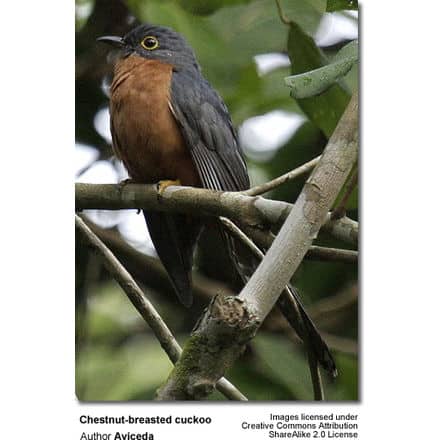
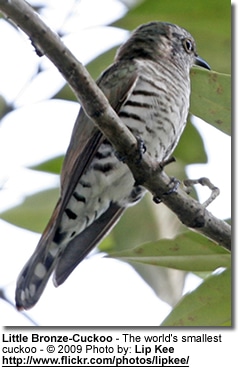 Subfamily Phaenicophaeinae – Malkohas and couas
Subfamily Phaenicophaeinae – Malkohas and couas
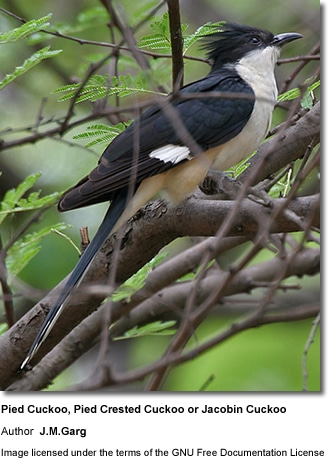 Subfamily
Subfamily 


